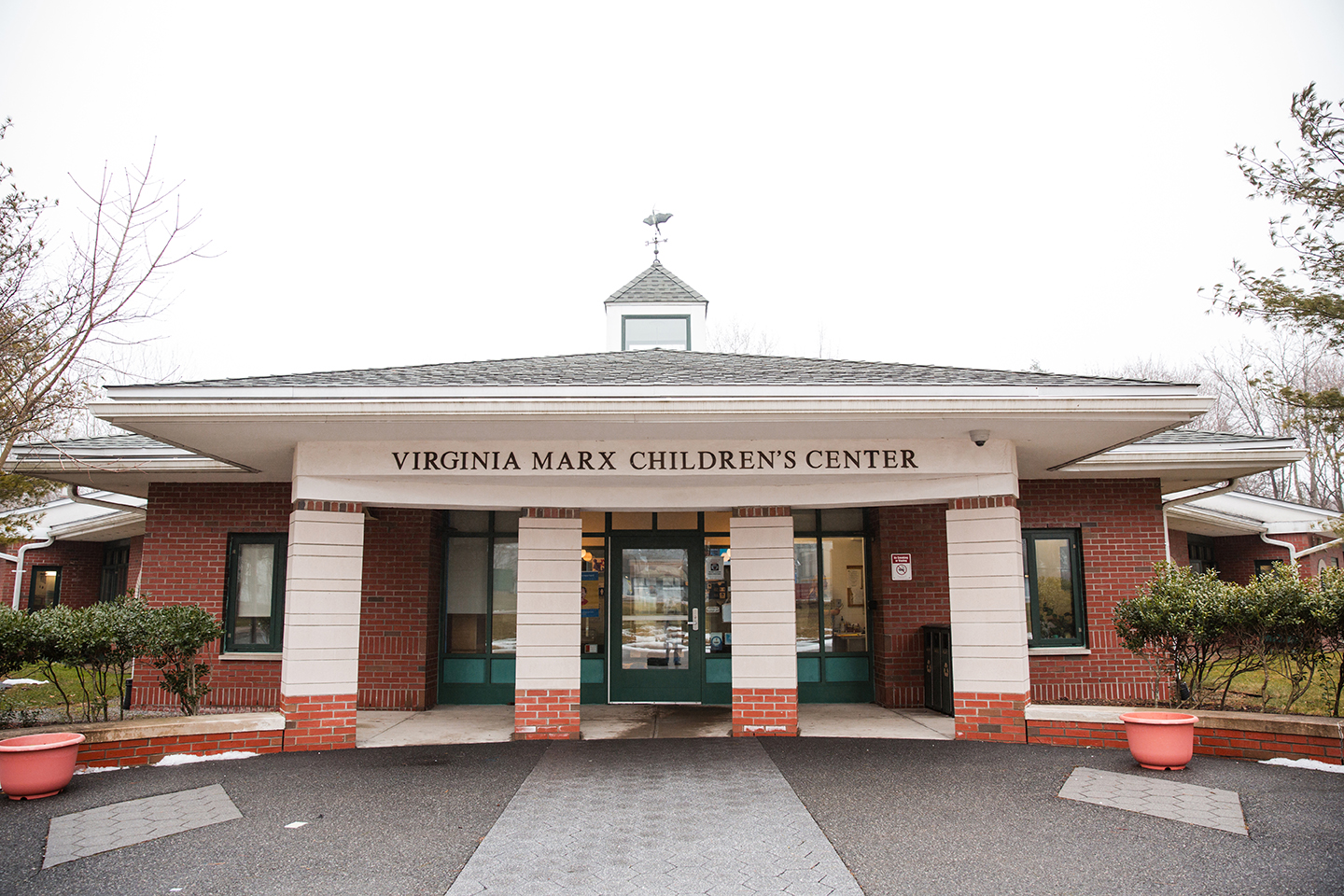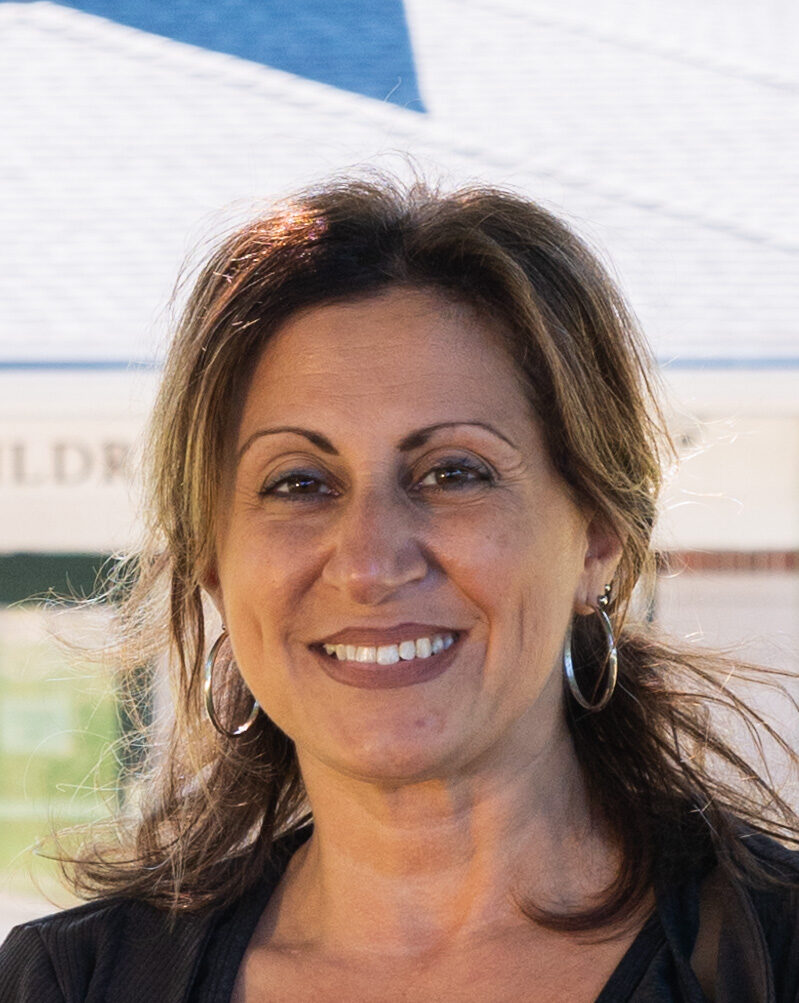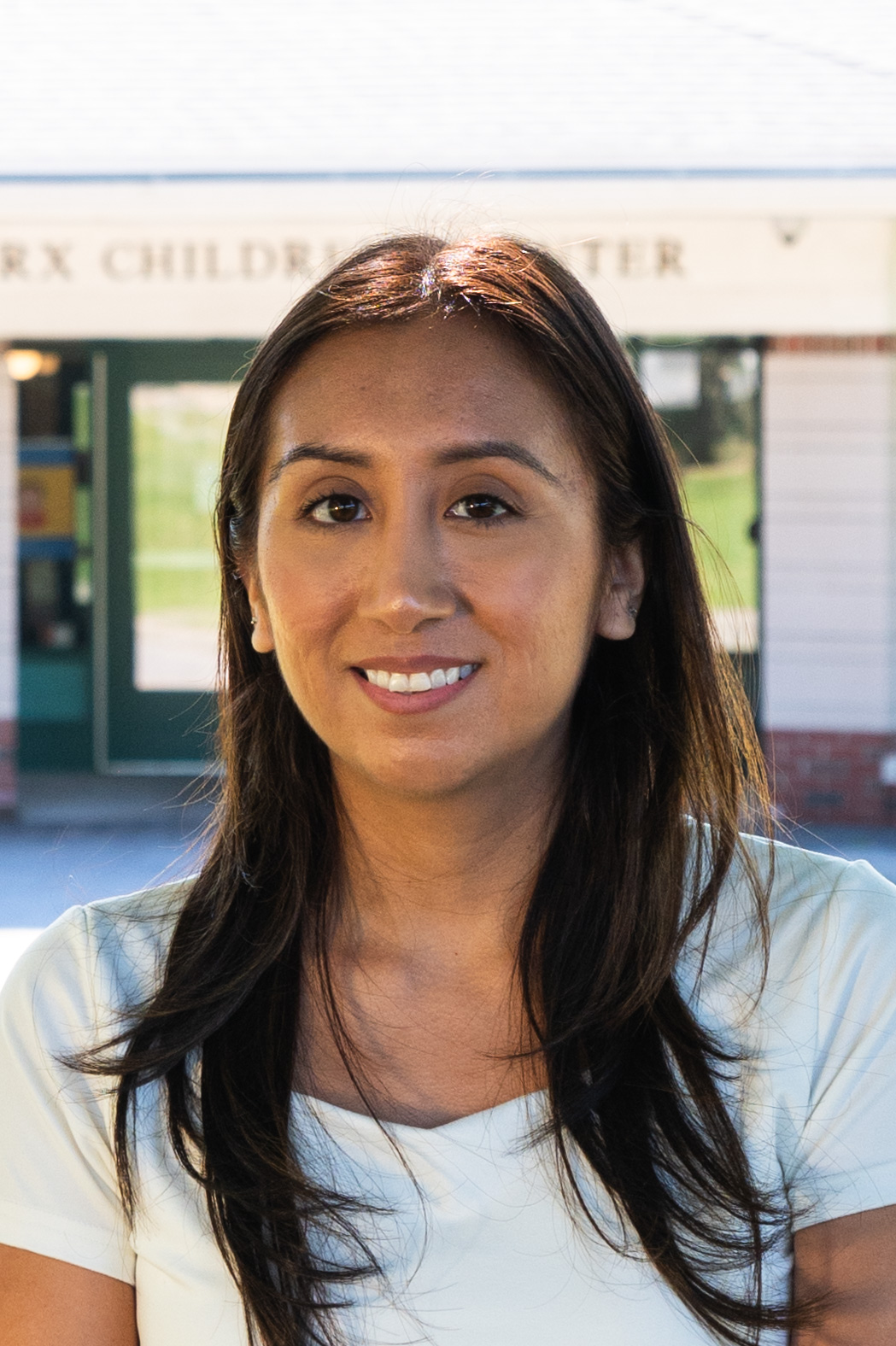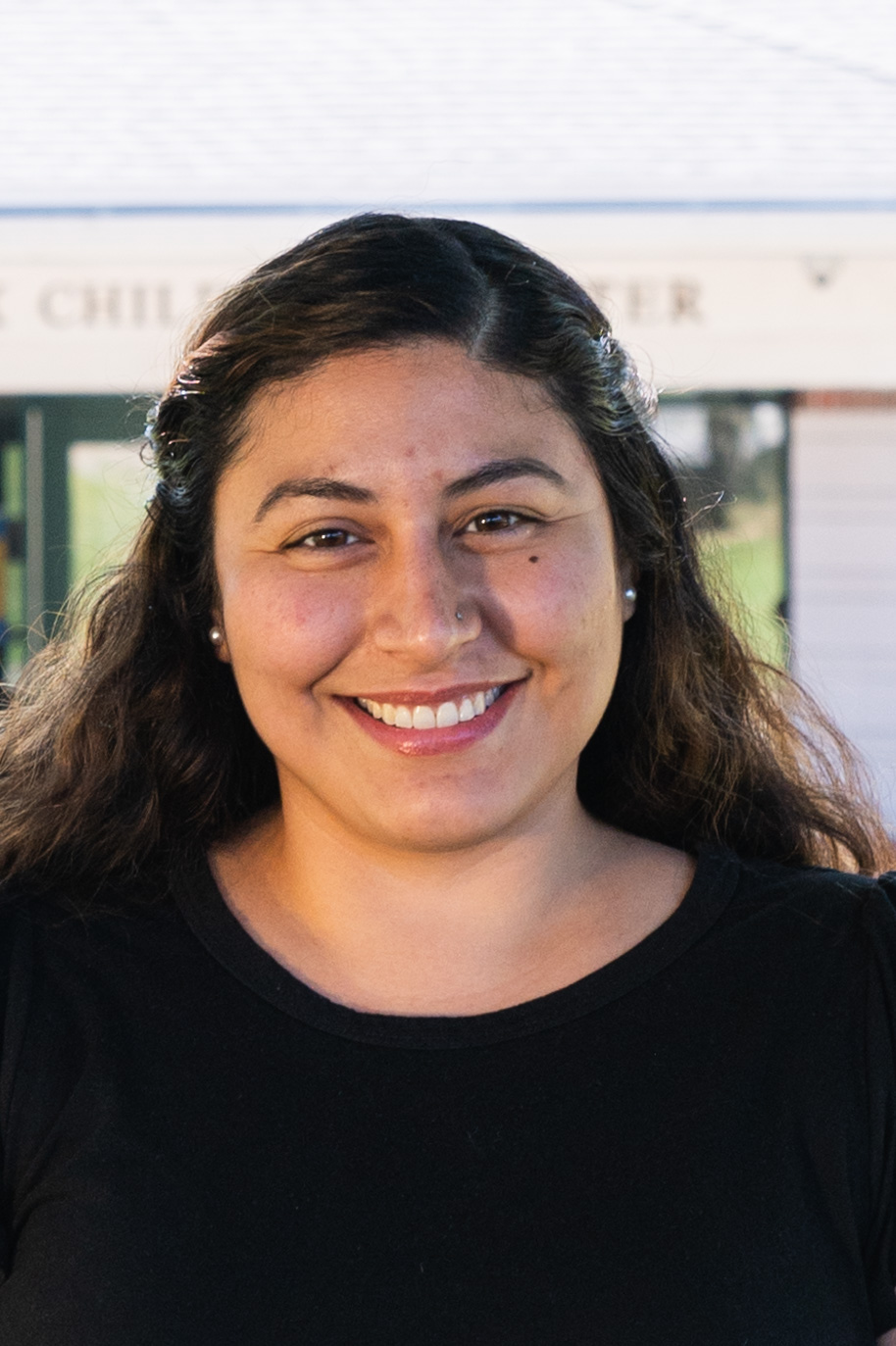
About the Center
About the Virginia Marx Children's Center
Now in our third decade of delivering exceptional child care, we remain committed to providing a nurturing, safe, and healthy environment that supports each child’s unique needs—a place where they can explore, learn, create, and discover.
History
The Westchester Community College Foundation’s involvement in supporting on-campus childcare began with Dr. Hankin’s vision to offer such a service at the college. Shortly after becoming president, he tasked a faculty committee with studying the feasibility of the project. However, it wasn’t until 1984, when Mrs. Virginia Marx joined the Foundation Board, that the idea began to take shape. Mrs. Marx, a well-known community leader and strong advocate for quality childcare, quickly agreed to chair the newly formed Academic Resources Committee. This committee was responsible for assessing the college’s resources and evaluating their effectiveness in meeting existing needs. Mrs. Marx directed the committee’s attention to the challenges faced by student-parents, particularly those with young children who struggled to attend classes due to a lack of childcare. She was especially attuned to the difficulties of single parents striving to achieve higher education without neglecting their children.
Virginia Marx championed the cause of quality childcare for student-parents, helping to turn the vision into reality. Her efforts were instrumental in establishing the Virginia Marx Children’s Center, which continues to serve the community by providing essential childcare services.
Our Philosophy
Infants
Our Infant program utilizes a primary care system, allowing children and families the opportunity to bond with a particular caregiver within a classroom. We focus on creating a secure environment where infants can establish trusting relationships with caregivers, while gradually understanding that parents will return at the end of the day. Special attention is given to the separation process and managing stranger anxiety throughout these early years.
Toddler
We recognize toddlerhood as a unique developmental stage, distinct from infancy and preschool. We respect and nurture the developmental tasks of this period, understanding that expecting certain behaviors from toddlers can alleviate many common issues. Our approach is to support toddlers in their growth with patience and understanding. Our toddler program is rooted in the belief that play is the primary way young children learn. Through play, toddlers explore their world, develop new skills, and build relationships. We provide a rich, stimulating environment filled with diverse materials and activities that encourage exploration and creativity. We understand that each toddler is unique, with their own interests and developmental pace. Our caregivers observe and document each child’s progress, tailoring activities to meet their individual needs and support their growth. We provide a nurturing environment where toddlers feel safe and valued. Our caregivers build strong, trusting relationships with each child, helping them navigate the challenges of toddlerhood with confidence and resilience.
Preschool
The preschool program follows a philosophical guideline known as the Developmental Interaction Approach. This is a concept that revolutionized early childhood education when it was first introduced more than seventy years ago. The basic tenet of the developmental-interaction approach is that the child needs to explore and then express his or her ideas through a variety of channels: imaginative play, discussion, art, or block building.
Play is seen as the child’s work. It is the means by which the child re-examines and re-creates again and again, everything which they have experienced and observed. Play is purposeful, exceedingly important, and serious. Activities chosen by the child are treated as important explorations. The developmental-interaction approach emphasizes the inseparability of the child’s emotional life from his or her intellectual and physical development.
Social interactions are of major importance. We consider it vital that children learn to be aware of their emotions, to identify and talk about them, to express their needs and problems and to become able to negotiate their resolution with other children and care givers. The teacher’s role is to facilitate the formation of friendships by encouraging and helping to negotiate interactions between children.
The preschool program abounds in open-ended material: water, sand, clay, blocks, puzzles, art materials, and the like. Children use the same materials at different ages in increasingly elaborate ways. Free play time is generous, and even planned activities may sometimes give way to the children’s spontaneous interests. Teachers assess children’s growing and changing levels of skill by materials they choose and how they incorporate the materials into their play. Individual portfolios, which document children’s work overtime, will be created as a means of assessment.
In both the Preschool and Infant/Toddler programs, social experiences are viewed as the key to later academic success. We consider it vital that children learn to be aware of their emotions, to identify and discuss them, become aware of their needs and be able to negotiate resolutions with other children and caregivers.
Philosophical Guidelines
The Virginia Marx Children’s Center’s preschool program follows a philosophical guideline known as the Developmental Interaction Approach. This is a concept that revolutionized early childhood education when it was first introduced more than seventy years ago. The basic tenet of the developmental-interaction approach is that the child needs to explore and then express his or her ideas through a variety of channels: imaginative play, discussion, art, or block building.
Play is seen as the child’s work. It is the means by which the child re-examines and re-creates again and again, everything which they have experienced and observed. Play is purposeful, exceedingly important, and serious. Activities chosen by the child are treated as important explorations. The developmental-interaction approach emphasizes the inseparability of the child’s emotional life from his or her intellectual and physical development.
Social interactions are of major importance. We consider it vital that children learn to be aware of their emotions, to identify and talk about them, to express their needs and problems and to become able to negotiate their resolution with other children and care givers. The teacher’s role is to facilitate the formation of friendships by encouraging and helping to negotiate interactions between children.
The preschool program abounds in open-ended material: water, sand, clay, blocks, puzzles, art materials, and the like. Children use the same materials at different ages in increasingly elaborate ways. Free play time is generous, and even planned activities may sometimes give way to the children’s spontaneous interests. Teachers assess children’s growing and changing levels of skill by materials they choose and how they incorporate the materials into their play. Individual portfolios, which document children’s work over time, will be created as a means of assessment.
Group size is limited to no more than eight babies, with at least one caregiver for every four children. Each infant is able to form a bond with a primary caregiver, and each caregiver can get to know a few babies very well.
Caregivers show warmth and support to infants throughout the day, making eye contact and talking to them about what is going on.
Alert to babies’ cues, adults hold infants or move them to a new place or position, giving them variety in what they are able to look at and do.
Caregivers pay close attention and talk to children during routines such as changing diapers, feeding, and changing clothes.
Caregivers talk, sing, and read to babies, enabling infants to become familiar with language and ultimately to recognize words and sounds.
Babies eat and sleep when they are most comfortable doing so. Caregivers consider infants’ individual preferences for food and styles of eating.
Caregivers follow standards for health and safety, including proper hand washing to limit the spread of infectious disease.
Caregivers can see and hear infants at all times.
Parents and caregivers share children’s activities and development on a daily basis, building a mutual understanding and trust. Caregivers welcome parents to drop by the Center.
Children remain with a primary caregiver over time so they can form a strong relationship with him/her. The caregiver learns to respond to the toddler’s individual temperament, needs and cues, and builds strong communication with the child’s family.
Caregivers praise children for their accomplishments and help them to feel more confident and in control of themselves.
Caregivers, recognizing that toddlers are not yet able to communicate their needs through language, promptly respond to children’s cries or other sighs of distress.
Caregivers communicate their warmth through pats on the back and hugs, or holding toddlers in their laps.
Caregivers set good examples for children by treating others with kindness and respect.
Recognizing that frequent testing of limits and saying ‘No’ is part of a toddler’s healthy development, caregivers minimizing their restrictions unless children are in physical or emotional danger. Rather than merely refusing and restraining children, caregivers offer a few options and emphasize what the child is allowed to do.
The setting is ‘inclusive’, that is, physical space and activities allow all children to participate. For example, a child with a physical disability eats at the table with other children.
Caregivers frequently read to toddlers, individually on the adult’s lap or in groups of two or three. Caregivers sing to toddlers, do finger-plays, and acts out simple stories as children actively participate.
Every day tasks such as eating, toileting, and dressing are opportunities for toddlers to learn new skills and better control their own behavior. Caregivers support toddlers’ attempts to take care of themselves and provide items that are easy for toddlers to use.
Children have many opportunities for active, large-muscle play both indoors and outdoors. Play equipment is safe and challenging for toddlers. Their outdoor space is separate from that of older children.
Adults follow health and safety procedures, including proper hand washing methods and universal precautions. Each area has clearly written procedures for waste disposal.
Caregivers directly supervise toddlers by sight and sound, even when they are sleeping.
Caregivers see parents as the primary source of affection and care for children. Parents are always welcome to the Center.
Caregivers have training in child development or early education specific to the toddler age group. They are warm and responsive to children’s needs and patient in supporting children as they become more independent.
A maximum group size of 10, with 1 adult for no more than 5 toddlers allows for an intimate atmosphere and the high level of supervision that toddlers require.
The staffing schedule allows for each toddler to develop a close relationship with a primary caregiver. Toddlers stay in the same group for many months to ensure close relationships.
Teachers providing meaningful classroom activities that challenge children to move forward. At the same time, children are able to successfully complete many of the tasks encountered so that they gain self-confidence, feel proud of their accomplishments, and learn to love learning.
Teachers planning a curriculum that engages the children. The classroom is arranged to give children easy access to toys and other materials. Children have the space to interact with their peers and adults.
Teachers maintaining a safe, healthy environment and carefully supervise the children.
Teachers taking adequate safety precautions so that children can take age-appropriate risks. For instance, 3- and 4-year olds can help bake cookies and, with a grownup’s assistance, use pot holders to take the baking sheets out of the oven.
Teachers planning a balanced schedule in which children don’t feel rushed or fatigued.
Teachers nurturing the 3- and 4- year-olds developing language and communication skills by encouraging conversation. They talk to children, listen to their responses, and provide opportunities for children to talk with one another.
Teachers helping children get the most out of every learning situation. They ask children questions about what he/she is doing, offer suggestions about other things to do, and add new challenges as the child is ready for them.
Teachers setting clear limits about acceptable social behavior. At the same time, they know that 3- to 4-year-olds get easily frustrated and are not always able to express their feelings.
Adults reading to the children every day – individually, in small groups, and sometimes even as a whole class. Teachers helping the children talk about what they have heard and help them relate the stories to activities in the classroom or at home.
Teachers making parents part of the community of learners. Parents are welcomed into the classroom, and teachers consult with them about their child’s needs and progress.








